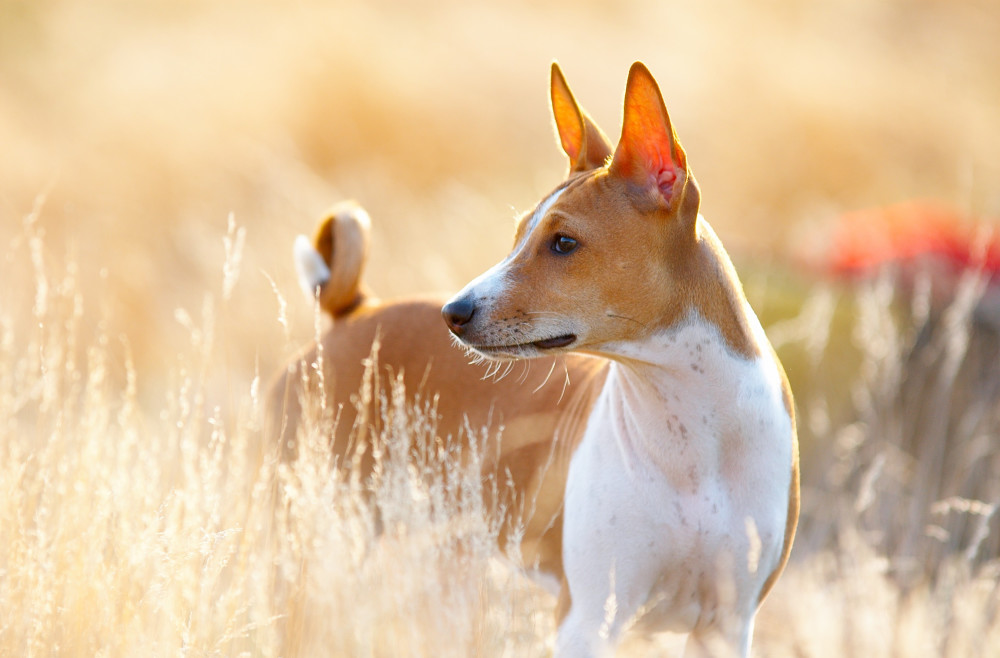Basenji

Basenji Overview
If Basenjis are anything, they’re unique. Bursting with energy and goofy playfulness, Basenjis are intelligent and curious hounds that like to play by their own rules—rules that are certain to keep their families giggling.
Historically bred as hunting dogs in Central Africa, they are quiet and efficient when put to task. In fact, they are often nicknamed the “barkless dog”—but that doesn’t mean they’re completely silent! Like many hounds, they are known to howl, but their oddly-shaped larynx makes their howls sound more like yodels (or “barooooo”s), a sound a Basenji owner knows and loves.
With short-haired, shiny coats and lean, long bodies, with a furrowed brow and a curly tail, Basenjis are good-looking, light dogs, suitable for living in urban or suburban towns. Their colours vary, from chestnut red to black, to tricolour, to brindle, all with their signature white feet and tail. They are also very clean animals, grooming themselves like cats, and making them perfect for cuddling (after a run at the dog park, of course).
Basenjis are extremely compassionate and loyal to their chosen pack but are not overly clingy and are happy to be left alone. Sometimes, they can be aloof with strangers or new dogs but will warm up quickly. As sighthounds, they like to investigate their surroundings, so are great for those who like hiking and outdoor exercise, or even roaming around the dog park. They are delighted by things that move and are fascinated with rabbits and squirrels. But these dogs are also wanderers, so they need to always be kept on a leash. With Basenjis, a little patience goes a long way for an extraordinary bond with a dog that will always keep you on your toes.
Did you know?
Basenjis are one of the oldest dog breeds on Earth. Dogs that resemble Basenjis have been found in cave paintings in Libya as far back as 6000 BCE.
Basenji Stats
Good with other animals
Intelligent
Caring for your breed
Daily kibble serving
2-3 cups
Daily exercise
2 hours
Grooming frequency
Brushed Occasionally

Feeding your Basenji
Basenjis aren’t always food-motivated but they may beg. Because of their high energy, they need food with high quality protein. Try to avoid food with artificial sweeteners, flavours or colouring. Adults eat two or three cups of food every day, depending on how many calories they burn. Some owners like to give them one full meal and one snack during the day.